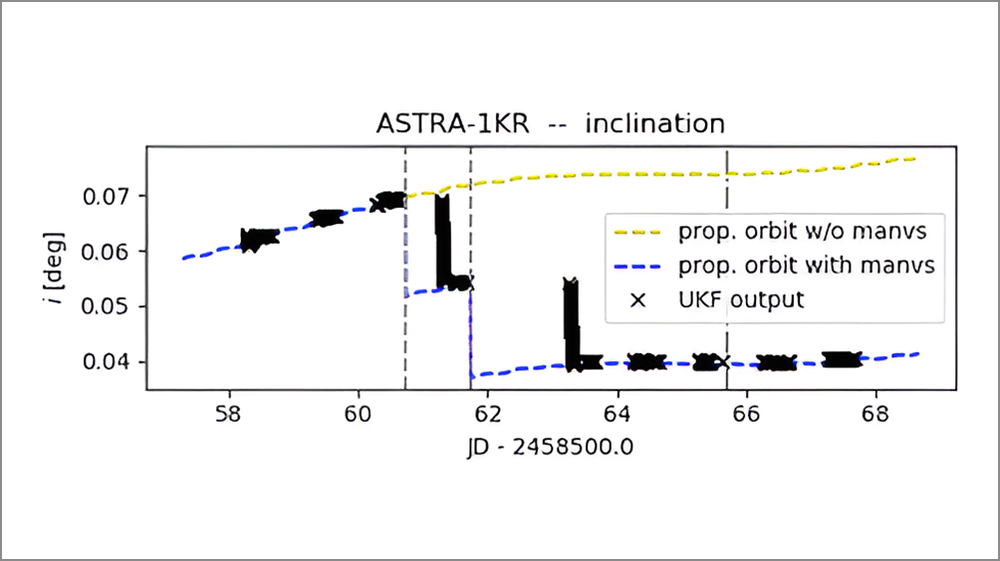Research and International Committees
Several research areas have emerged from the data collected by SMARTnet™, leading to the development of new methods that deepen our understanding of space activities. This knowledge is also used to contribute to policy discussions in both national and international committees.
Maneuver Detection

To maintain better catalog tracking of satellites, it is important to know whether they are performing orbital maneuvers. These maneuvers must be detected, and their amplitude and direction estimated. Various algorithms for detection, such as the Extended Kalman Filter, Unscented Kalman Filter, and Maneuver Scan Method, are being developed and compared. If a maneuver is detected, it is recorded in the object properties within BACARDI 2.0. Additionally, the magnitude of the maneuver is estimated during orbit improvement to achieve more accurate orbital predictions.
Light curve analyses
Another field is the analysis of the behavior of objects in space. For this, light curves are captured and analyzed. The observations are planned and conducted using sCMOS cameras at our telescope stations. After processing the images, light curves are generated and analyzed with respect to rotational axes, rotational periods, and any changes in these parameters. This is especially important for designing disposal missions for satellites or space debris, ensuring that the object's rotation is accounted for during the capture process.
Decision making with Artificial Intelligence
The number of collision warnings continues to increase over time. Currently, these warnings are manually analyzed and processed, which requires significant expertise and time to decide whether an evasive maneuver is necessary. This is where the use of artificial intelligence comes into play, helping to optimize and significantly scale up the decision-making process.
Re-Entry Prediction
It is also essential to understand and predict the long-term behavior of objects in space. Various analyses are conducted for this purpose, both to verify and/or improve current atmospheric models based on known data and to enable long-term predictions. This allows for the continuous analysis of space activities over extended periods.
Optimised Observation Planning
All of this feeds into optimized observation planning. Within SMARTnet, various approaches are applied for optimized night planning, such as minimizing telescope movements throughout the night to reduce telescope downtime. Other approaches focus on observing epochs of catalogued objects with the goal of improving orbital accuracy or simultaneously observing multiple objects.
International Committees

In international committee work, support is provided to the German delegations within the Inter-Agency Space Debris Coordination Committee (IADC) as well as to standardization bodies at the European Cooperation for Space Standardization (ECSS) and the International Organization for Standardization (ISO). This support aims to analyze, define, and ensure the sustainable use of space in an international context.
